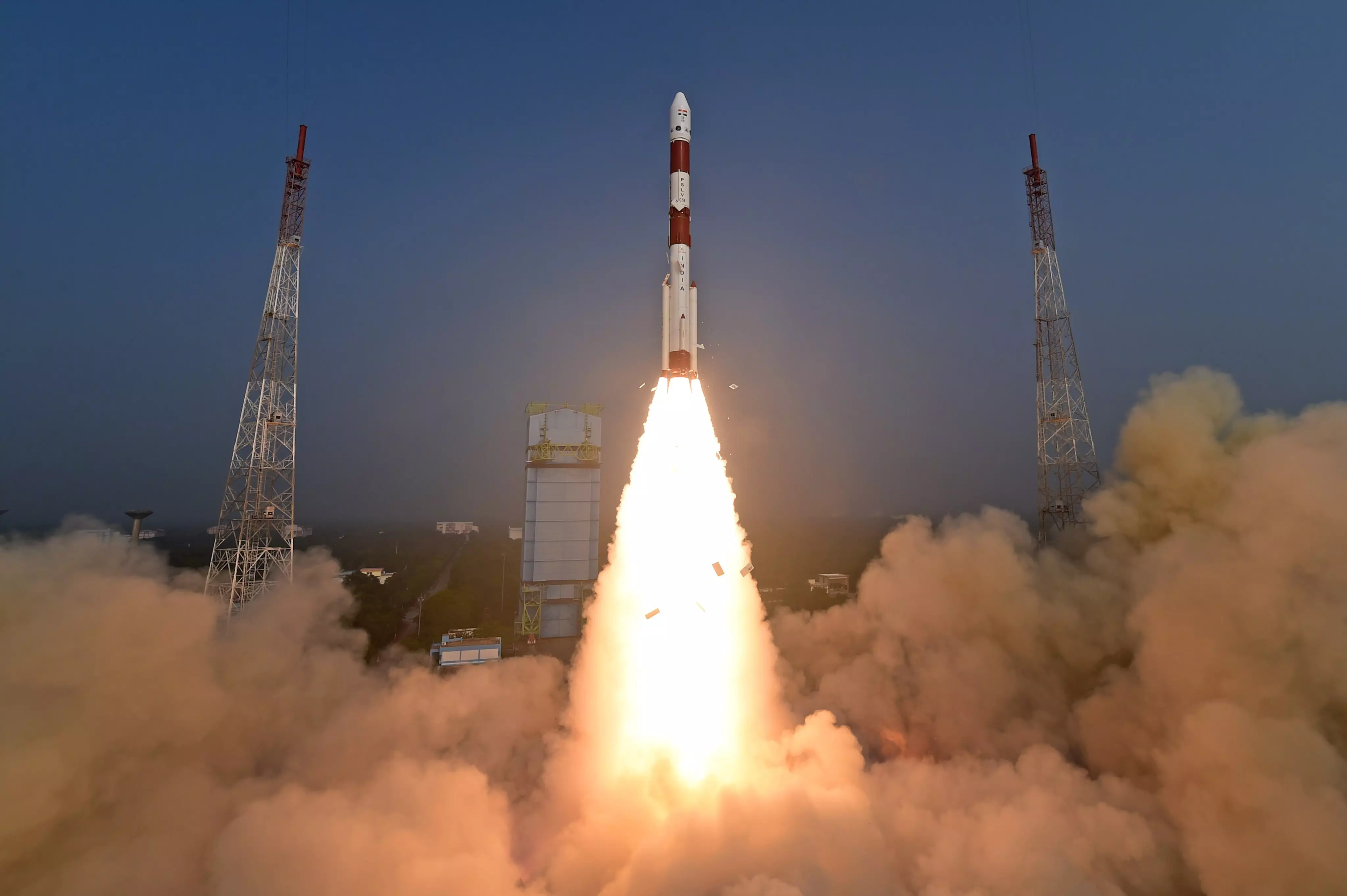
After NASA, ISRO launches XPoSat that would study black holes
The PSLV-C58 rocket, in its 60th mission, carried primary payload XPoSat and 10 other satellites to be deployed in low earth orbits

ISRO on Monday (January 1) successfully did a manoeuvring experiment by firing the fourth stage of a Polar Satellite Launch Vehicle rocket twice to conduct scientific experiments.
After the 44.4-meter-tall PSLV rocket lifted off from the first launch pad at 9.10 am on Monday, it placed the primary satellite X-Ray Polarimeter Satellite (XPoSat) into the desired orbit after 21 minutes of flight as intended. Later, scientists at the Bengaluru-headquartered space agency fired the fourth stage of the PSLV rocket twice to reduce the altitude from 650 km to 350 km to conduct the scientific experiment in which 10 other payloads of various ISRO centres would be operational in the Low Earth Orbits under the PSLV Orbital Experimental Module-3 (POEM) experiment.
ISRO's maiden XPoSat will offer insights into celestial objects like black holes. It makes India the second country after the United States’ NASA to send a satellite into space to study black holes and neutron stars in the Milky Way galaxy.
#ISRO begins 2024 in Style!
— Dr Jitendra Singh (@DrJitendraSingh) January 1, 2024
Successful launch of PSLV-C58/ 🛰 XPoSat Mission.
Proud to be associated with the Department of Space at a time when Team @isro continues to accomplish one success after the other, with the personal intervention & patronage from PM Sh @narendramodi. pic.twitter.com/cisbjpUYpH
The rocket used for Monday’s successful mission was the PSLV-DL variant, which has a lift-off mass of 260 tonnes. The fourth stage is configured as a 3-axis stabilised Orbital platform for conducting experiments. The space agency conducted a similar scientific experiment using POEM-2 in the PSLV-C55 mission in April 2023. The electrical power requirements of the fourth stage orbital platform are catered by Flexible Solar Panel in conjunction with 50 Ah Li-ion battery.
The orbital platform (PS4) consists of avionic systems to take care of navigation, guidance, control and telecommands and orbital platform altitude control systems to cater to the control to test the payloads, ISRO said.
What are the 10 payloads?
Among the 10 payloads are: Radiation Shielding Experiment Module by TakeMe2Space, Women Engineered Satellite by LBS Institute of Technology for Women, BeliefSat (an amateur radio satellite) built by K J Somaiya Institute of Technology, Green Impulse Transmitter by Inspecity Space Labs Pvt Ltd,
LEATTD - Launching Expeditions for Aspiring Technologies Technology Demonstrator by Dhruva Space Pvt Ltd. RUDRA 0.3HPGP and ARKA 200 developed by Bellatrix Aerospace Pvt Ltd, Dust Experiment (DEX) built by PRL, ISRO and Fuel Cell Power System and Si based High Energy cell built by Vikram Sarabhai Space Centre are the others.
(With inputs from agencies)

